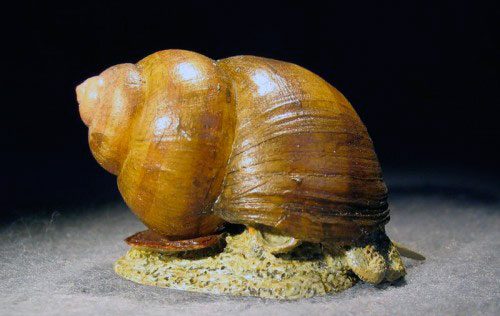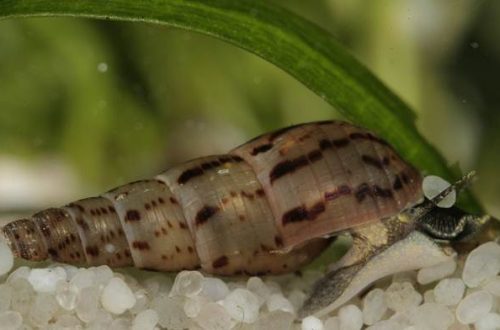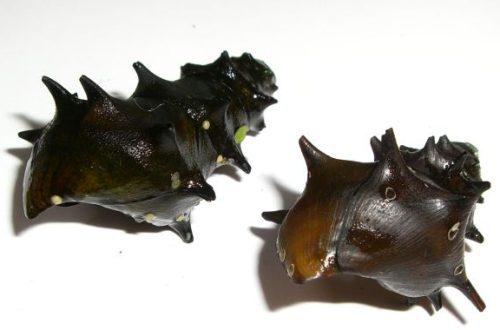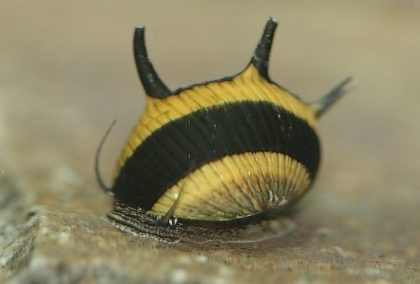
Horned snail: maintenance and care, photo, description.

The horned snail got its “folk” name due to the horn-like processes on its shell. The shells of snails of this species are colored yellow-black, with small patches of brown-black. Besides. The shells of horned snails are very durable, and the “horns” themselves have an interesting structure, and can even injure a person who will hold or squeeze the snail in his hand. This is a very interesting creature that will not let the rest of the inhabitants of the aquarium get bored and will decorate its decoration with itself.
Description
Horned snails are the smallest neritic species I have ever kept. The average size of this snail is up to about 1 cm in diameter, but some already mature or old snails can reach 1 cm or more in diameter. But the small size of horned snails does not diminish their beauty in the slightest.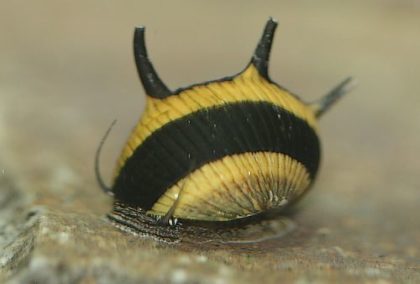
Such snails in an aquarium immediately attract attention due to the contrasting yellow-black color and the unusual shape of their shell. Such coloring and structure of the shell are visible even in the youngest and smallest individuals. The colors of horned snails can be of various color variations, for example, with some unusual parts and interspersed with similar shades or different colors of curls.
The horns, or bayonets, of each horned snail are located differently, i.e. there is no pattern here. What specifically affects the size of the “horns” and their location is not known. In addition, it is also not known whether these horns continue to grow in length as the snail matures. Usually these processes are located at the top of the shell, as well as closer to it.
Even if the place on the shell where the horn is located will increase as the snail grows, the size of the horn may remain the same. The main thing you should remember when caring for these snails is not to scoop them up or squeeze them, because. as a result, you can damage the skin on your hands.
Features of behavior
Horned snails are famous for their habit of “running” out of the water and wandering outside the aquarium.
They can be without water for a long time. Having found a runaway snail, you just need to return it to its place. While in the water, they will live as long as possible if they do not periodically get out into the air. For this reason, the aquarium should be constantly monitored and prevented from their attempts to escape.
If horned snails are constantly trying to escape, this may be a signal that the water in the aquarium is not suitable for them, and you need to carefully monitor the conditions in which they are kept.
Feeding
Horned snails are known for their outstanding appetite. These snails eat almost all the algae that are in the aquarium: located on the walls, decorative elements, plants. Being small in size, they are able to penetrate places where larger snails and algae-eating fish cannot.
Also, due to their low weight, they can withstand almost any aquarium plants that have thin and small leaves, they do not fall off their surface, which often happens with larger snails. Horned snails need additional nutrition in the form of dry pressed algae in order to receive the necessary trace elements, otherwise they will eat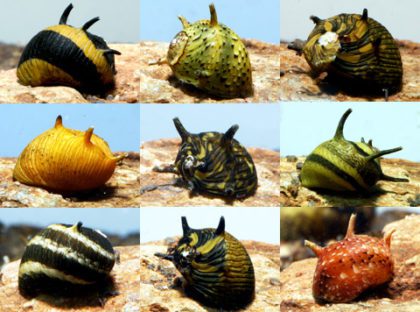 this vegetation in the aquarium (only if you do not have a problem of algae growth that needs to be addressed).
this vegetation in the aquarium (only if you do not have a problem of algae growth that needs to be addressed).
Reproduction
With the reproduction of horned snails in aquarium conditions, not everything is so simple, because. these snails belong to those species that can only breed in sea water. We have information that some aquarists managed to get offspring in a freshwater aquarium, but it was not viable and almost all died after a few days.



